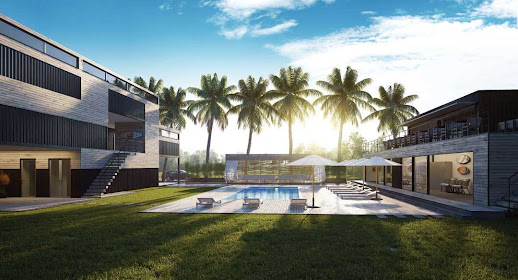- Get link
- X
- Other Apps
Architecture is more than just bricks and mortar; it is a powerful form of expression that shapes our environment and influences our experiences. Beyond the functional aspects of design, architects have the ability to weave compelling narratives that transcend the physical structures they create. The art of storytelling in architectural projects adds a layer of meaning, emotion, and connection, turning buildings into immersive experiences that resonate with people on a profound level.
The Architectural Narrative:
Every architectural project begins with a vision—a concept that goes beyond mere aesthetics. Architects are storytellers who craft narratives that guide their designs. The narrative serves as the foundation, influencing every decision from the layout and materials to the overall atmosphere. It is the story that breathes life into the blueprint, transforming it from a technical document into a living, breathing entity.
Architects often draw inspiration from the surrounding context, cultural influences, and the intended purpose of the structure. The narrative becomes a thread that ties these elements together, creating a cohesive and meaningful design. For example, a museum's design may draw from the rich history it houses, telling the story of the artifacts within its walls through its architecture.
Human Experience and Emotional Connection:
Buildings are not just static structures; they are dynamic spaces that people inhabit and interact with. Storytelling in architecture has the power to shape the human experience within these spaces. By incorporating narrative elements, architects can evoke emotions, trigger memories, and create a sense of place that goes beyond the physical attributes of the structure.
Consider a hospital designed with a narrative focused on healing and comfort. The architecture can be crafted to promote a calming atmosphere, with natural light, soothing colors, and open spaces that contribute to the overall well-being of patients. In this way, the architectural narrative becomes a crucial element in enhancing the human experience within the built environment.
Community Engagement and Identity:
Architectural storytelling extends beyond individual structures to encompass entire communities. When architects consider the collective narrative of a neighborhood or city, they can create designs that contribute to a shared identity and sense of belonging. The architecture becomes a reflection of the community's history, values, and aspirations.
Community engagement becomes an integral part of the storytelling process. By involving local residents in the design process, architects can ensure that the narrative resonates with the people it serves. This collaborative approach fosters a deeper connection between the community and its built environment, resulting in spaces that are not only functional but also meaningful and relevant to those who inhabit them.
Adaptability and Evolution:
The power of storytelling in architecture lies in its ability to adapt and evolve over time. Buildings, like stories, have a life of their own. As society changes, so do the narratives embedded in architectural designs. Adaptive reuse of existing structures is a testament to the enduring power of architectural storytelling. Old factories become vibrant art galleries, and historic warehouses are transformed into modern residences, each carrying forward a narrative that transcends time.
Conclusion:
In the realm of architecture, storytelling is more than a creative flourish; it is a fundamental aspect that gives purpose and meaning to the built environment. Architects have the unique ability to shape narratives that resonate with people, fostering emotional connections and a sense of identity within the spaces they create. The power of storytelling in architectural projects goes beyond aesthetics; it is a force that transforms buildings into enduring stories, leaving a lasting impact on individuals and communities alike. As architects continue to push boundaries and explore new possibilities, the narratives they craft will play an increasingly vital role in shaping the future of our built world.


Comments
Post a Comment